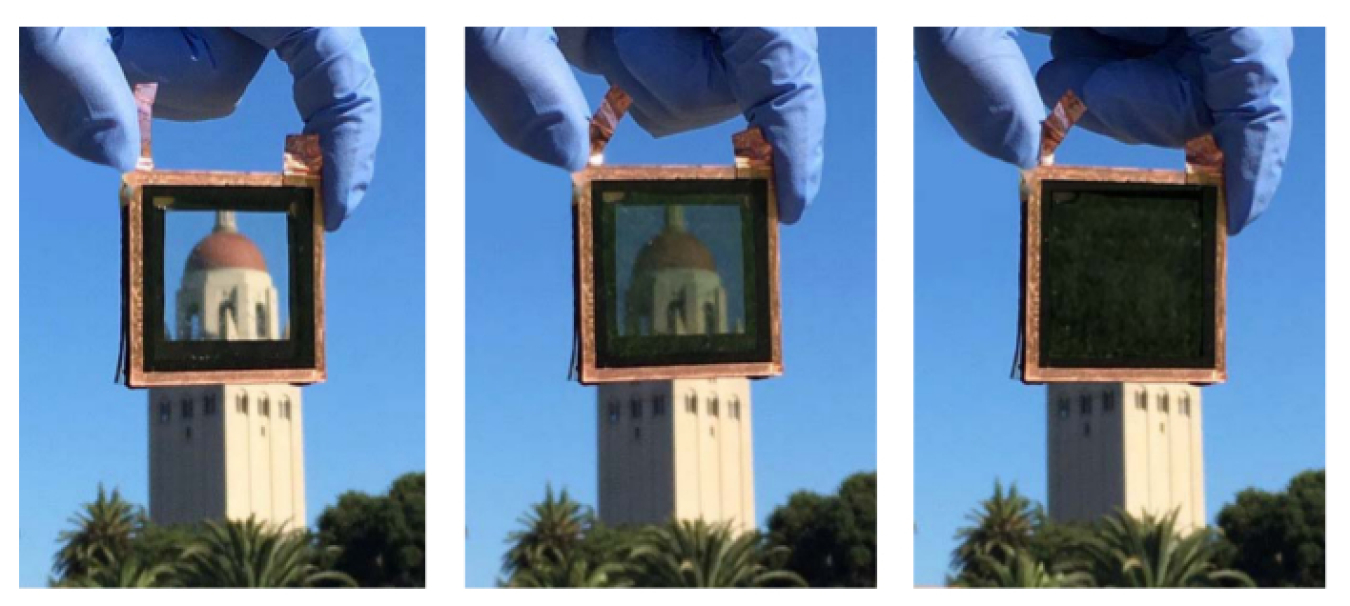
The window in its clear, partially tinted, and dark states.
Lead Performer: Stanford University — Stanford, CA
DOE Total Funding: $416,000
Cost Share: $46,000
Project Term: September 2017 — September 2020
Funding Type: Buildings Energy Efficiency Frontiers & Innovation Technologies (BENEFIT) – 2017 (DE-FOA-0001632)
Project Objective
Stanford University will explore reversible electroplating of metal and low-resistance transparent conductors with micro copper grids to develop low-cost dynamic windows with faster switching speeds. The team will work toward the development of inexpensive dynamic windows based on reversible electroplating of metals. The project team will use invisible micron-sized copper grid lines to store metal for deposition, develop a transparent conductor with the micro copper grid to increase the electrical current, and utilize this reversible electrodeposition and dissolution of metals to limit the light and heat entering a building through windows. These low-resistance ITO transparent conductors can also be applied beyond windows (e.g. flat screen televisions).
Project Impact
Although dynamic windows offer modest energy savings, this technology has the added value of large peak energy reduction, optimization of daylighting, HVAC control, passive heating harvesting and cooling load reduction. The goal of this project is to develop an electrolyte without any optical degradation to 1-sun UV and 85oC heat testing (as per ASTM E2141 – 14) independent of the assembled cell.
Contacts
DOE Technology Manager: Marc LaFrance
Lead Performer: Michael McGehee, Stanford University

